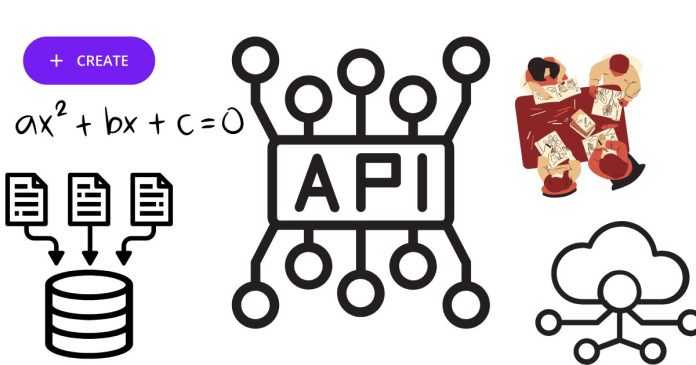When generating a new API key, it’s important to follow best practices to ensure security, usability, and manageability. Here’s a structured approach to generate a new API key:
1. Decide on the Key Format
API keys should be long and randomly generated to make them difficult to guess or brute-force. A good API key is often a string of random alphanumeric characters, with a mix of uppercase, lowercase, numbers, and possibly symbols. For example, an API key could look like:
5d41402abc4b2a76b9719d911017c592
Key format considerations:
- Length: At least 32 characters for security.
- Character set: Alphanumeric (A-Z, a-z, 0-9) plus symbols if needed.
- Unpredictability: Ensure the key is generated randomly to avoid any patterns.
2. Use a Secure Random Generator
In any programming language, always use a secure method to generate random data. Avoid using basic random functions like Math.random() in JavaScript or rand() in PHP, as they are not cryptographically secure.
For example:
- In Python, use
secretsoruuid:import secrets api_key = secrets.token_hex(32) # Generates a 64-character hexadecimal key print(api_key) - In Node.js, use the
cryptomodule:const crypto = require('crypto'); const api_key = crypto.randomBytes(32).toString('hex'); // Generates a 64-character hexadecimal key console.log(api_key); - In Go, use
crypto/rand:package main import ( "crypto/rand" "fmt" ) func generateAPIKey() string { bytes := make([]byte, 32) rand.Read(bytes) // Generates random bytes return fmt.Sprintf("%x", bytes) } func main() { apiKey := generateAPIKey() fmt.Println(apiKey) }
3. Store API Keys Securely
API keys are sensitive data and must be stored securely. Here are some best practices for storage:
- Environment Variables: Store API keys in environment variables on your server or in configuration files that are not included in version control.
- Encrypted Storage: If you must store API keys in a database, ensure that they are encrypted both in transit and at rest.
- Never expose API keys publicly: Avoid hard-coding keys in your source code or frontend JavaScript.
4. Key Expiry and Revocation
For better security, it’s important to have mechanisms for key expiry and revocation:
- Expiration: API keys should be time-limited (e.g., valid for a month or year), and automatically expire after a set period. This minimizes the risk if a key gets exposed.
- Revocation: Allow users to revoke API keys manually from their account dashboard or automatically after certain events (e.g., multiple failed attempts or a security breach).
5. Scoping API Keys
To limit the damage of an exposed key, use scoping. Scoping allows you to restrict what the API key can do. For example:
- Permissions: Restrict the key to only specific actions (e.g.,
readaccess,writeaccess). - IP Whitelisting: Only allow requests from certain IP addresses or ranges.
- Rate Limiting: Set limits on the number of requests that can be made with the API key within a specific time window.
6. Use HTTPS
Always use HTTPS to ensure that the API key is transmitted securely over the network. Sending API keys over HTTP makes them vulnerable to being intercepted by attackers.
7. Monitor API Key Usage
Once the API key is generated, actively monitor its usage. Keep track of:
- Access logs: Log all requests made with each API key, including IP address, endpoints accessed, and timestamps.
- Unusual behavior: Watch for patterns that indicate misuse, such as high-frequency requests or access from unusual locations.
8. Versioning API Keys
Consider using versioned API keys if you plan to evolve your API over time. This allows you to maintain backward compatibility with older versions of your API while securely deprecating old keys.
9. Avoid Overuse of API Keys
If you are generating API keys for different users or applications, make sure you don’t have a single, global API key in your system for all users or apps. Each application or user should have its own API key to manage permissions effectively and limit damage in case a key is compromised.
10. Use Two-Factor Authentication (2FA) for Key Generation (Optional)
For extra security, require two-factor authentication (2FA) before allowing the generation of a new API key, especially for sensitive operations (e.g., accessing payment data or personal information).
Example Workflow for API Key Generation:
- User logs in to their account.
- They request a new API key through a dashboard or API endpoint.
- System generates a random key using a secure random generator.
- Store the key in a secure database or environment variable.
- Return the key to the user.
- Optionally, log the creation event for auditing purposes.
- Provide the ability to revoke or regenerate keys from the user’s dashboard.
- Use cryptographically secure random generation for API keys.
- Store keys securely (e.g., environment variables, encrypted storage).
- Implement expiration and revocation mechanisms.
- Scope the keys to limit their permissions and access.
- Always use HTTPS to secure the communication of API keys.
- Monitor key usage and be proactive about key management.
By following these best practices, you can ensure that your API keys are both secure and manageable, reducing the risks associated with key exposure or misuse.


